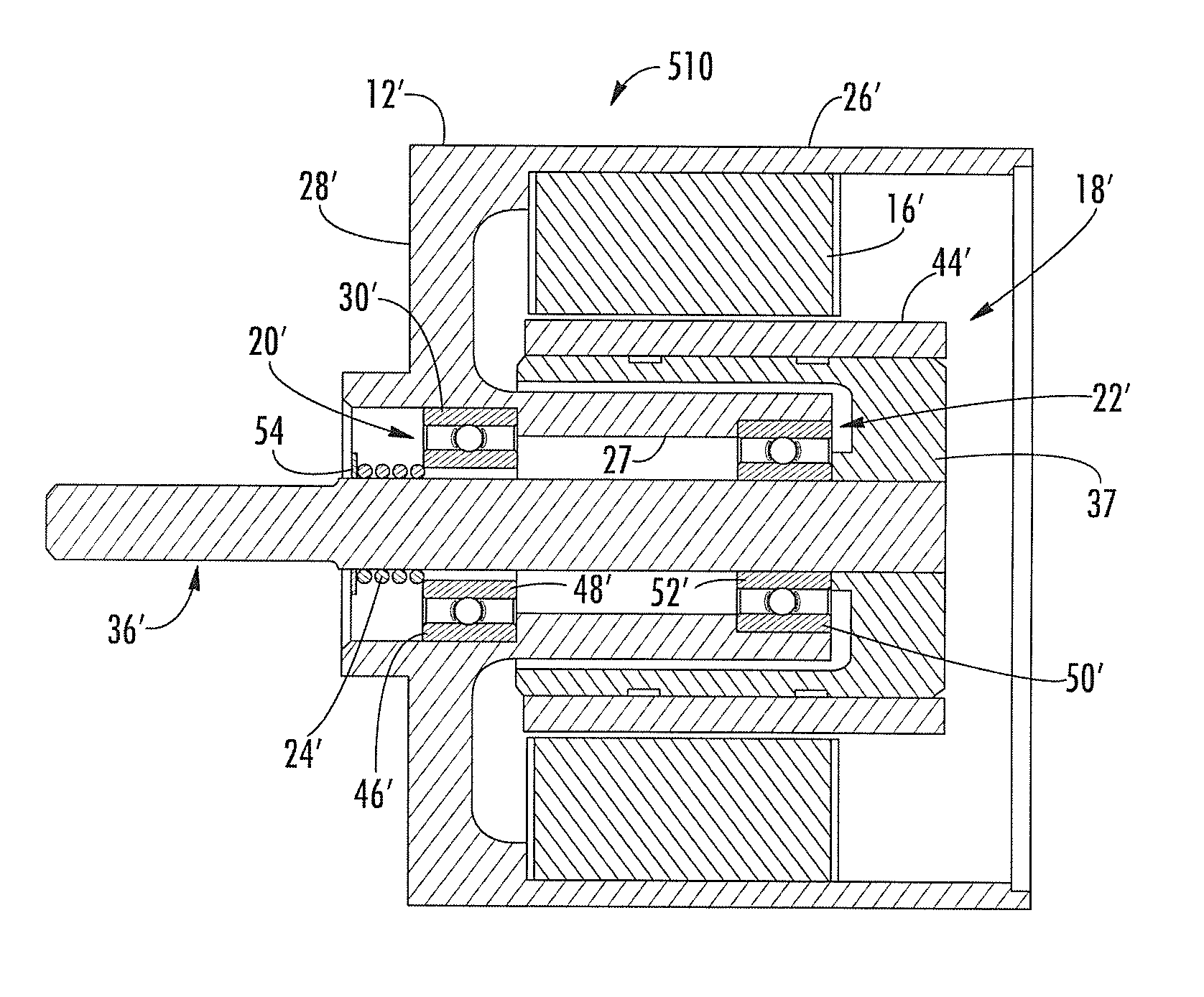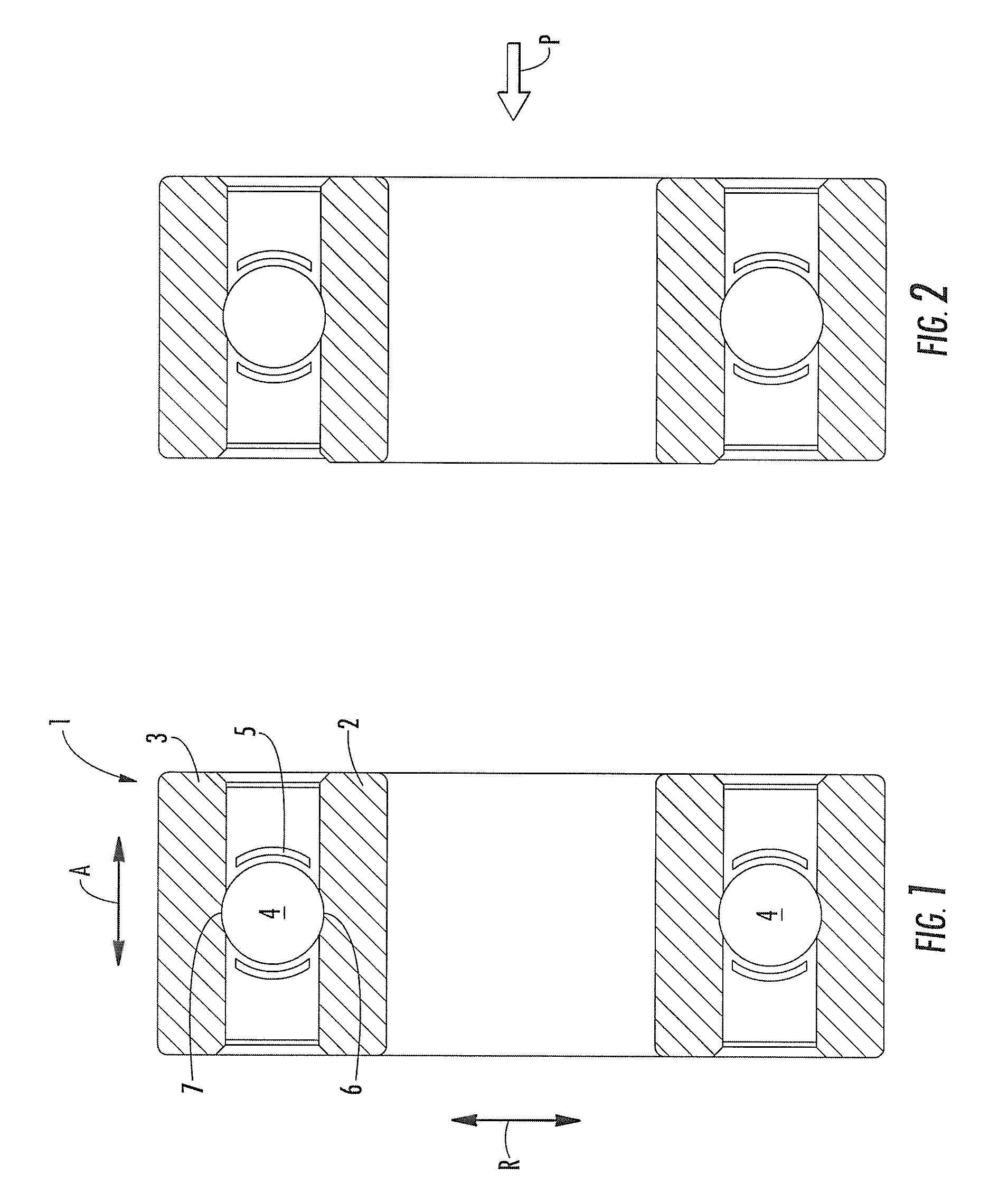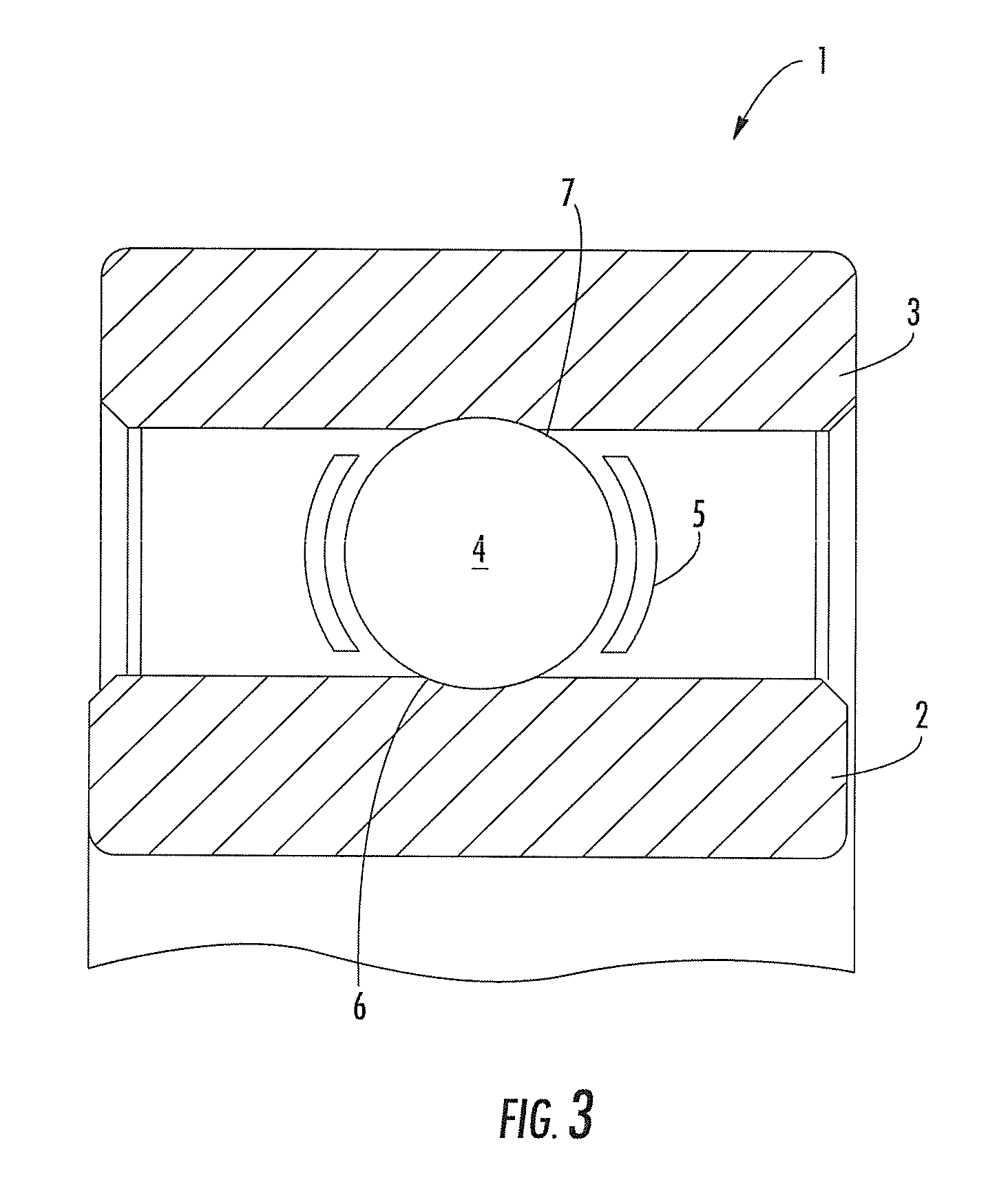Method of assembling a pump motor with bearing preload
a technology of bearing preload and pump motor, which is applied in the direction of machines/engines, manufacturing stator/rotor bodies, and positive displacement liquid engines, etc., can solve the problems of motor life appreciably reduced, motors subject to changing internal temperatures, and loss of preload on bearings
- Summary
- Abstract
- Description
- Claims
- Application Information
AI Technical Summary
Benefits of technology
Problems solved by technology
Method used
Image
Examples
first embodiment
[0037]Turning now to the present invention, FIG. 4 shows a motor 10 constructed in accordance with the present invention. The illustrated example is of a brushless permanent magnet DC motor, but the operative principle of the present invention is equally application to other types of motors as well. The basic components of the motor 10 are a housing 12, an end bell 14, a stator 16, a rotor assembly 18, a front bearing 20, a rear bearing 22, and a spring 24. The housing 12 is a generally cylindrical, open-ended member including an axially extending portion 26 and a front end plate 28 which has a front bearing pocket 30 formed therein. The front end plate portion of the housing 12 could also be a separate component attached by a variety of methods, for example, screws, press fit, welding, etc. The housing 12 may be formed by any known method including casting, forging, machining, powder metallurgy, etc. The end bell 14 is a member adapted to close off the rear end of the housing 12 an...
second embodiment
[0048]FIG. 8 shows a motor 410 constructed in accordance with the present invention. This type of motor is sometimes referred to as a cantilevered design because of the relationship of the rotor assembly to the bearings. Elements in common with the motors depicted in FIGS. 4-7 are shown in prime reference numerals. The basic components of the motor 410 are a housing 12′, a stator 16′, a rotor assembly 18′, a front bearing 20′, a rear bearing 22′, and a preload spring 24′. The housing 12′ is a generally cylindrical, open-ended member including outer axially extending portion 26′, an inner axially extending portion 27, and a front end plate 28′. The inner axially extending portion 27 defines a front bearing pocket 30′ and a rear bearing pocket 34′. The housing 12′ may be formed by any known method including casting, forging, machining, powder metallurgy, etc. The stator 16′ is of a known type comprising an array of flat plates wound with coils of wire. The rotor assembly 18′ comprises...
PUM
| Property | Measurement | Unit |
|---|---|---|
| temperature | aaaaa | aaaaa |
| temperature | aaaaa | aaaaa |
| temperature | aaaaa | aaaaa |
Abstract
Description
Claims
Application Information
 Login to View More
Login to View More - R&D
- Intellectual Property
- Life Sciences
- Materials
- Tech Scout
- Unparalleled Data Quality
- Higher Quality Content
- 60% Fewer Hallucinations
Browse by: Latest US Patents, China's latest patents, Technical Efficacy Thesaurus, Application Domain, Technology Topic, Popular Technical Reports.
© 2025 PatSnap. All rights reserved.Legal|Privacy policy|Modern Slavery Act Transparency Statement|Sitemap|About US| Contact US: help@patsnap.com



